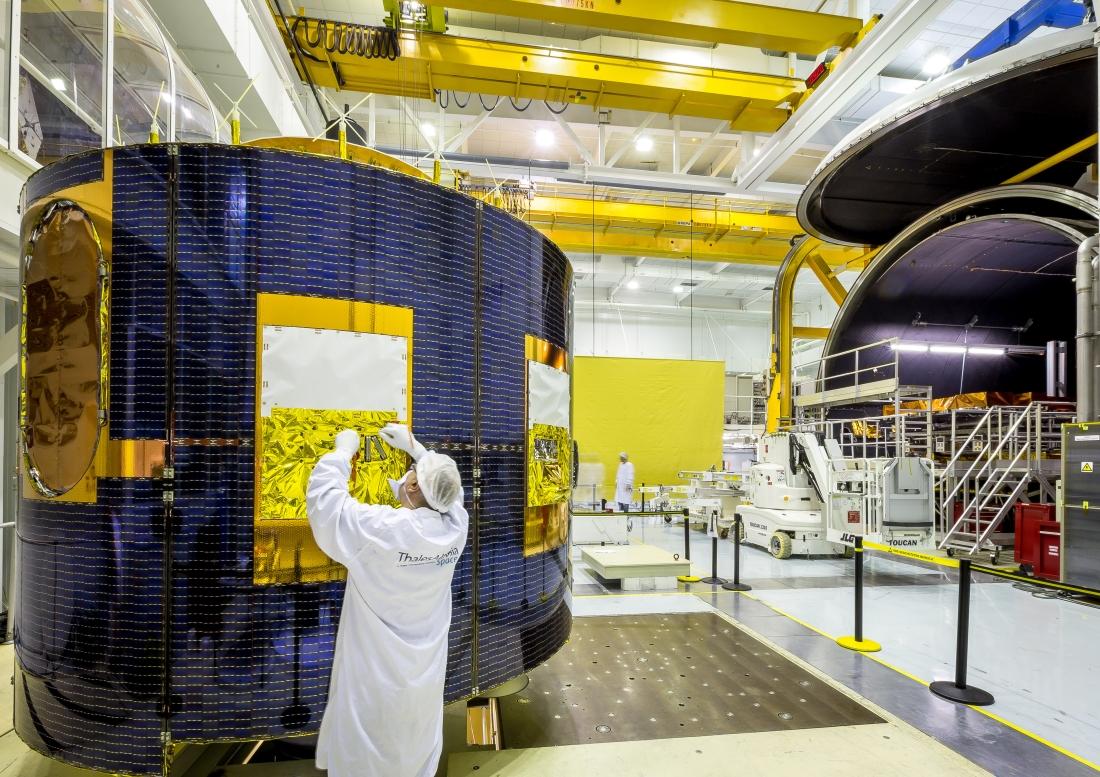Meet Nuria Marti Boix

Could you briefly describe what you do day to day?

Nuria Marti Boix. I’m an electronics engineer, in charge of the assembly, integration and testing of satellite components, instruments and subsystems.
Our Zurich facility is specialized in the development and production of high-performance opto-electronics instruments for Earth Observation satellites and has a significant expertise in free space optical communication systems. Thales Alenia Space in Switzerland has dedicated as well competencies regarding radiation monitors and photonics.
My own job involves the production of imaging spectrometers.
What’s an imaging spectrometer?

Let me take the example of the program I’m working on right now, namely MTG, the third generation of European climatology and weather satellites. The Meteosat Third Generation program will comprise six satellites in all, four imaging satellites and two atmospheric sounding satellites.
Each of the two sounding satellites will be fitted with an imaging spectrometer instrument built in Switzerland, giving them infrared, ultraviolet and visible imaging capabilities over Europe. With these instruments, we can deliver to our customer, the European Space Agency, unprecedented information on the presence of gases in the atmosphere and cloud properties. This is obviously a key to better understanding the impact of global warming, so we can act to safeguard the thin atmospheric layer that protects our planet as well as monitor the air quality.

From a personal standpoint, I realize that I’m both lucky and privileged to be part of a company that has built all European geostationary weather satellites since the late 1970s as prime contractor.
What would you say is your career highlight to date?

On October 13, 2017, Sentinel-5P, an Earth Observation satellite from ESA, part of Europe’s Copernicus program, was successfully launched. The only instrument it carries is an imaging spectrometer designed to measure the quantities of ozone, methane, formaldehyde, aerosols, carbon monoxide, nitrogen dioxide (NO2) and sulfur dioxide (SO2) in the atmosphere. In other words, it collects invaluable information on air quality, the ozone layer and climatic phenomena. Thales Alenia Space in Switzerland made a major contribution to building this instrument; I had the chance to be part of the project team. For us, the successful launch was the culmination of our efforts. It’s a little like seeing a child you raised stand on his own two feet. It was a real moment of grace, combined with emotions and pride.
If you had to describe the qualities needed for your job in three words…
Copyrights :
First artistic view : © Thales Alenia Space/Briot
Photo Nuria: © Thales Alenia Space
MTG: © Thales Alenia Space/Master Image Programmes
MSG-4: ©Thales Alenia Space/Imag[IN]
Copernicus: © ESA

